But across town at the National Farm Machinery Show, the race for precision agriculture was heating up.
“Precision” is the word being used liberally in farming trade shows throughout the country, but nowhere was it more prevalent than at the National Farm Machinery show.
Precision data, precision planting, precision guidance systems, precision spraying, precision application, precision margin tracking, precision farm and soil analysis.
Remember how we used cell phones as big as shoe boxes just a few years ago? And it took nearly 20 years to turn it into a smartphone.
Those same technology-driven inventions are flooding the ag markets now in ways you and I once never knew were even on the horizon. These advances aren’t taking decades like the phone did.
Since the basic technology is already available, it’s just a matter of building on that and fine-tuning it to fit agricultural applications. And no seed, no soil particle will be left unturned in its wake.
What’s driving it? New technology equals new toys? Yes, but mostly no. With the average age of farmers rising (more than 56 years) and those same farmers sometimes struggling to use their smartphones, newness may offer some excitement but it doesn’t seem to be driving the market.
The driver is really market competition – finding ways to farm smarter, which increases production and secures profit margins. “Smart progress” is the new catch phrase.
Evidence of the precision-farming principle was displayed in hundreds of trade booths where farmers had engineered, manufactured and were marketing their own inventions.
That facet of farming ingenuity has been around for centuries, with farmers finding creative new and improved ways to accomplish their work.
It certainly has not diminished, but the newer technological ingenuity has absolutely exploded the market.
Most of the ag technology advances aren’t even new any more and were introduced two to five years ago, but nearly every vendor came out with a “new and improved” model, new enhancements or new data management options for this year’s show.
They’re also finding ways to simplify the labor required for inputs – streamline, streamline, streamline.
While navigating the new technology options can be overwhelming, the market for these products is very robust.
Crop prices have held strong over the last few years, yet every farmer knows that it will again cycle and profit margins will flatten.
So producers seem to sense that now is the time to hone production practices and invest in “smart progress,” which is why crowds of thousands turned out to learn more about the products available for precision farming.
While we can’t introduce every new product introduced at this year’s show, we’d like to bring you a few that caught our eye. FG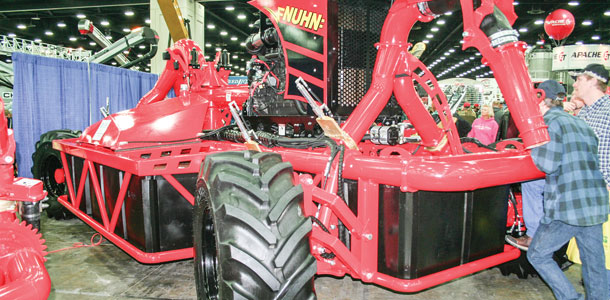
Lagoon Crawler
Nuhn
(519) 393-6284
The Lagoon Crawler looks like an overgrown hobby toy, which may be why it stopped traffic at the show. The amphibious design of this remote control lagoon agitator combined with four-wheel steering and hydraulically driven tires makes it easy to maneuver.
Some manufacturers of remote-driven lagoon agitators used to make models that would climb out of the lagoon on their own power, rather than being lifted out, but because the lagoon banks were muddy and steep, they often became stuck and performed miserably at best.
Nuhn has developed a seven-nozzle agitator designed for 5-acre to 10-acre lagoons. If you get stuck on central islands, the hydraulic lift raises the Crawler 5 feet above hovering height.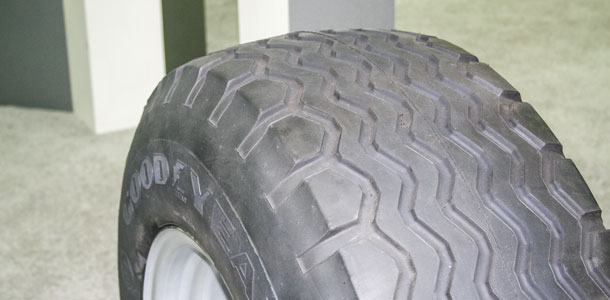
Goodyear FS24
Titan
(800) USA-BEAR
Titan introduced its F-series radial implement tires to replace high-speed bias implement tires.
The F-series uses lower air pressure to reduce heating, with 52 to 78 psi, whereas the previous bias tires ranged around 100 psi. The new radial construction has a larger contact area, round shoulders and is puncture-resistant.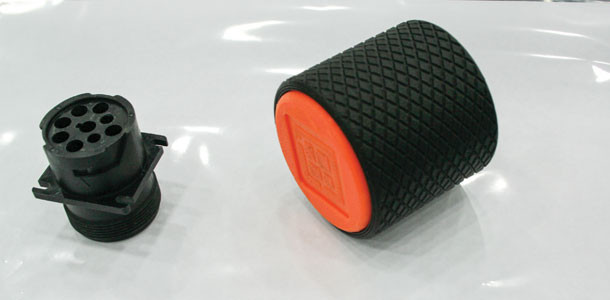
640 Drive
640Labs
Let’s say you have one brand of tractor, a guidance system from another manufacturer, and a field mapping system from another source – maybe a university.
How do you coordinate that information? 640Labs, a start-up company in 2013, has a 640 Drive Bluetooth-based module smaller than your fist that plugs into your existing data port (CANBUS port) in the cab.
All data transports through the module to store data in cloud-based storage in a comma delimited value format, which is compatible across all data systems.
This reduces data entry getting information from one system into another system. All data is time-stamped and geo-tagged, and immediately accessible.
The module can be given to custom operators or applicators (with their permission) so the farmer has immediate access to harvest or application data from others, as well. Every tractor made in the last decade has a standard J1939/ISOBUS interface.
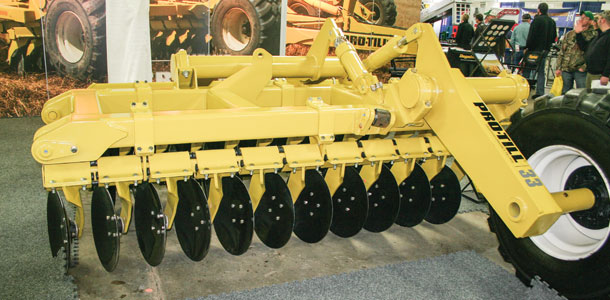
Pro-till
Degelman
(800) 667-3545
Called the “residue-killing machine” this high-speed (10 to 14 mph) cultivator is ideal for seedbed preparation in no-till rotations. It offers rubber suspension disc arms for rock protection.
At 32,000 pounds, the weight equals better soil penetration. Independent wing sections allow contour angles to ride flexibly over hills and valleys. Wings fold for a linear tow package.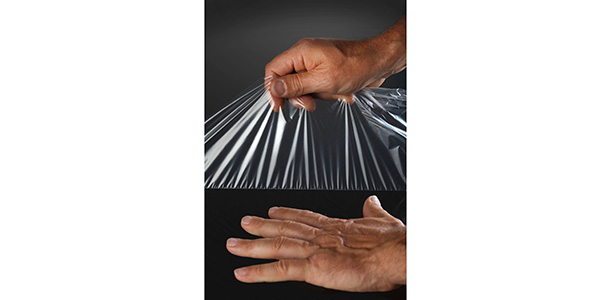
Polydress O2 Barrier 2-in-1
Poly Excel LLC
(612) 280-8391
When most people cover a silage pile, they use two layers of sheeting – an oxygen-barrier sheet and a standard sheet.
The Polydress O2 Barrier 2-in-1 comes as one sheet, combining both oxygen barrier and standard sheeting, which translates into only one installation trip over the pile.
This product involves combining the benefits of a true oxygen barrier with a standard sheeting. It minimizes the oxygen transmission rate by a factor of six to 10 times compared with basic silage covers.
Once applied to the pit or pile, the moisture from the forage causes separation of the thinner poly amide layer, which then sucks down to the surface of the pit while the oxygen is utilized in fermentation.
The outer layer continues to act as the protective cover, protecting the pit while the oxygen barrier lowers the amount of oxygen capable of penetrating through to the forage surface.
Haybuster.psd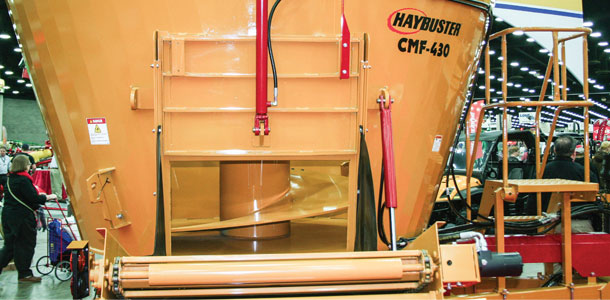
CMF-430 Vertical Mixer
Haybuster
(701) 252-4601
No newcomer to the vertical mixer industry, Haybuster introduced a mid-sized single-auger mixer, geared for the smaller or mid-size dairy and beef markets.
The mixer features a 3-foot or 4-foot conveyor extension with a 42-inch door opening. It features a four-point scale system with Digi-Star monitor.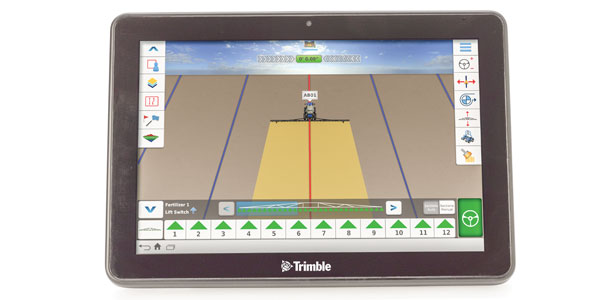
Trimble TMX-2050 Display
(408) 481-8000
This Android-based high-definition touchscreen display has tablet-like interface to move and turn widgets on and off, much like a smartphone. It boasts wireless data transfer (as long as you have good cell service) for field-to-office data exchange.
The unit itself can be transferred cab-to-cab with quick- mount and single-cable connection. It’s more than guidance and mapping; it also has steering, boom height control, sprayer section control and variable rate control capability.
You can view local weather forecasts, monitor fleet vehicles, locate other vehicle operators and view their activity, and even check commodity prices. Manage your whole farm from the cab.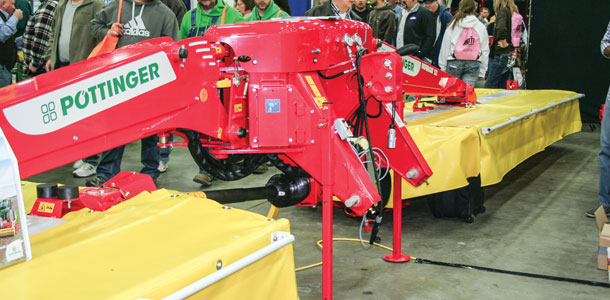
Novacat S12 Mower
Pottinger
(219) 510-5534
New in 2014, the largest working width-mounted mower combination in the world at 36.74 feet. Yet, it can run at 15 to 18 miles per hour.
The mower boasts 25 percent more output with 25 percent less diesel consumption with 160 horsepower requirement and a three-point hitch. They don’t make them any bigger.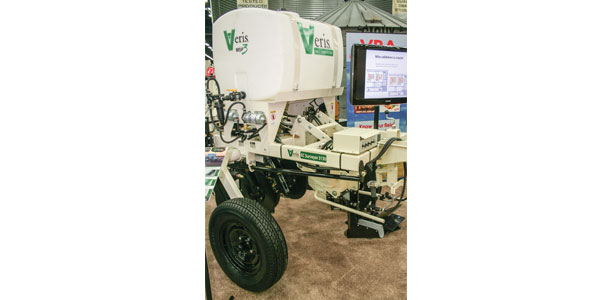
EC Surveyor 3150
Veris Technologies
(758) 825-1978
Many field mapping technologies still use the USDA soil survey of the ’70s in formulations. A lot has changed since then, and the EC Surveyor 3150 is a soil-sensing unit that takes a reading every 30 seconds at depths of 12 and 36 inches as it is pulled through the field, accurately gauging organic matter, soil textures (through electrical conductivity) and pH to create precision field mapping.
This makes fertilizer and water input calculations more accurate, increasing farm efficiency and productivity like never before. Co-ops, fertilizer companies and farmers’ groups are buying these for their members to use, because it only has to be used once per field and provides more accurate data than the decades-old USDA soil survey maps.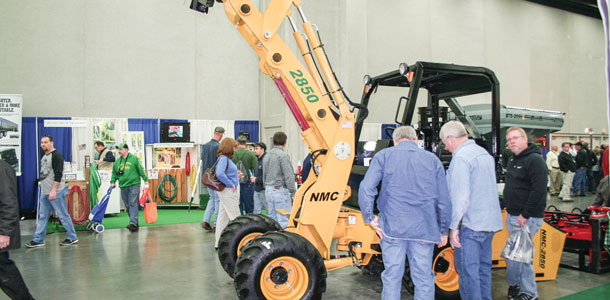
NMC-2850
NMC-Wollard, Inc.
(800) 656-6867
The NMC-2850 articulated loader has a lift capacity of 2,850 pounds, with a dump height of 97 inches, and boasts an 84.5 hp Kubota turbo diesel engine. Articulated steering helps reduce turn ruts, with wheel steering and joystick bucket control. This new size expands NMC’s loader lineup.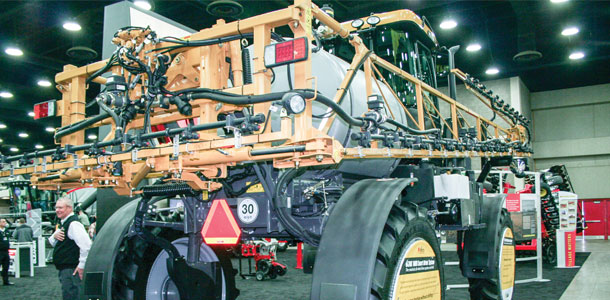
RoGator 700
AGCO
(877) 525-4384
Looking to capitalize on a mid-size sprayer? AGCO introduced the Rogator 700, a 700-gallon sprayer with lighter chassis for ease of operation. It features smart drive, an all-wheel drive that ensures equal wheel speed that prevents crop scuffing on turns.
At 19,800 pounds, the RoGator can enter the fields earlier in the spring. A tier-4 interim model, it boasts fuel economy, using 5 to 7 gallons fuel per hour.
The flex frame keeps constant wheel-to-ground contact even on uneven surfaces. The booms host poly plumbing for 4-pound to 50-pound application rates. Boom height minimum is 18 inches.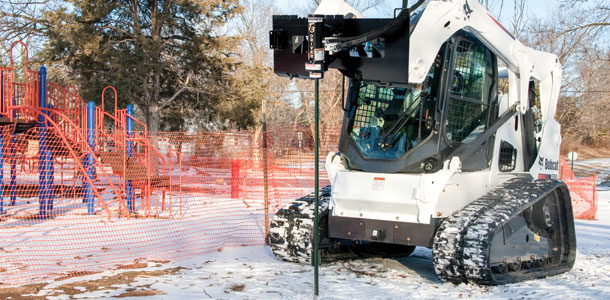
Danuser T3 Driver
(573) 642-2246
Digging holes is what Danuser does best, and their latest skid-steer attachment is a T-post driver that drives T-posts, tent stakes, signposts and pipe up to 3 inches in diameter, striking six hits per second.
The top of the post is contained in the machine, preventing the post from kicking out.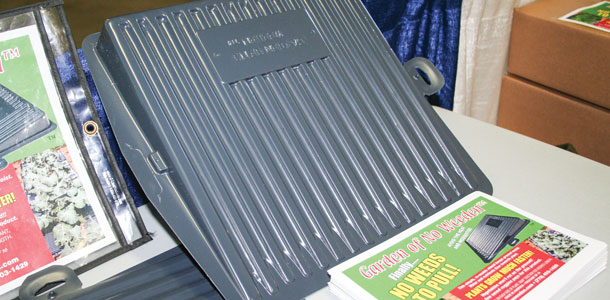
Garden of No Weeden
(770) 403-1429
I admit, I had a personal interest in this product. It’s not produced by a major manufacturer – just a hobby gardener that got tired of weeding.
He invented these plastic snap-together shields, which are angled to catch moisture and funnel it to the seed row while suppressing weeds between rows.
The shield is also corrugated to keep moisture flowing off the sagging tomatoes, melons or what have you. It’s a re-usable replacement for the black plastic we like to put down in gardens. Genius. (Honey, you’re reading this right? This is what I want for Mother’s Day, hint-hint.)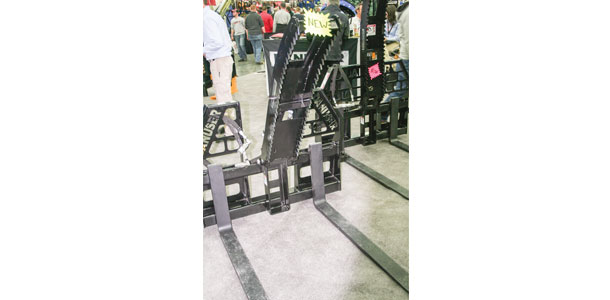
Pallet fork with grapple option
Danuser
(573) 642-2246
It’s the opposable-thumb concept. Picking something up with a pallet fork is great, but what if you could secure the load with a top-pressure grapple? Better stability, right?
That’s Danuser’s concept. With a maximum grapple opening of 55 inches, the grapple can also be locked and stored out of the way for normal pallet fork use.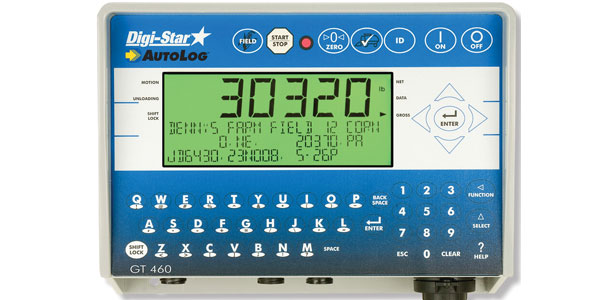
Model GT 460
Digi-Star
(800) 225-7695
Digi-Star has taken their grain weighing system and refined it for the forage producer to eliminate yield guessing. The GT 460 weighs forage on wagons and trucks in the field for accurate yield records, documenting each and every load from each and every field.
It also features preset maximum weight limits to avoid overloading trucks or axles (not that you mind paying citations, of course).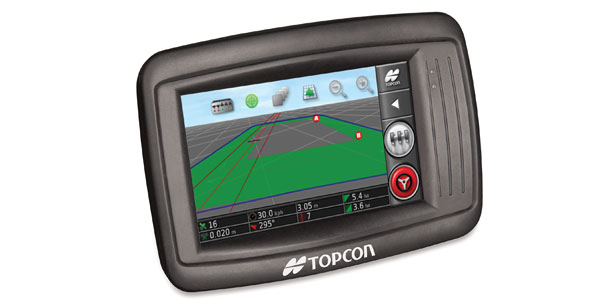
Topcon X14 touchscreen guidance console
Topcon Precision Agriculture
(925) 245-8599
This full-color touchscreen offers 3D graphics that look a lot like your car’s GPS and offers manual guidance, coverage mapping or auto steering.
It even tells you which way to turn in an irregularly shaped field at row ends to optimize efficiency and reduce compaction.
It’s not just a guidance package but also works with your sprayer to control rate, with multiple language capability. You can start with a basic package and add features as precision farming application needs grow.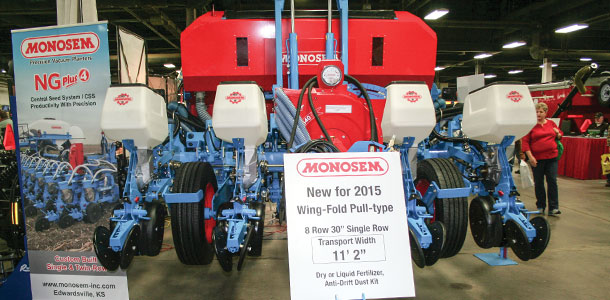
NG Plus Planting Unit
Monosem
(913) 438-1700
No grease zerts. Yes, you read that right – no grease zerts. The NG Plus planter has cast-iron construction and wider, shorter, parallel linkage that creates more down pressure to cut through field residue for no-till planting.
With patented seed-singling accuracy, the planter depth can be fine-tuned as it wears. The new eight-fold design has not been previously available and is available for the 2015 planting season.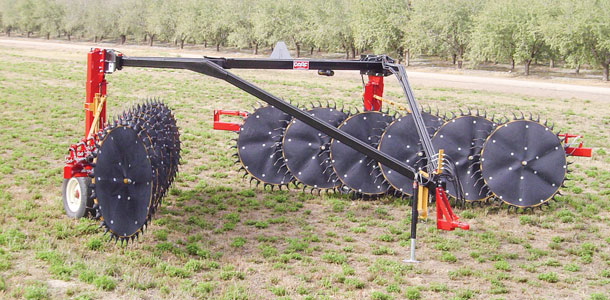
Darf 513 Heartlander overhead rake
Nikkel Iron Works
(559) 999-1014
This model is an upgrade from the Darf 1017, featuring a patent-pending tow bar design that improves the rake’s stability and allows for easy adjustment and operation.
Features include a re-designed Fasse valve, offered as optional, which gives the option to operate both sides of the rake independently. It also features a magnetically mounted work light. This rake is designed for those with two to five cuttings annually.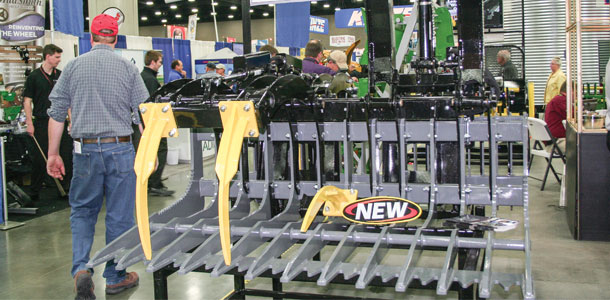
XRB Rock Bucket
(800) 658-4703
I hated whenever my dad got on a backhoe; I just knew he was going to injure whoever was assigned to sling the chains around whatever object was being lifted.
He needed a rock bucket, which uses grappling hooks to secure the load. In the rock bucket lineup, new this year, MDS Manufacturing has come out with a standard grapple that converts to a split-grapple option, so one side of the tines works independently from the other side, increasing your loader’s potential.
Terradisc 6001
Pottinger
(219) 510-5534
New in 2014 from Pottinger is a compact disc harrow that helps manage corn stalk residue and cover crops. It buries crop residue while preparing a shallow seedbed.
Minimum tillage depth is 1 to 5 inches, allowing the operator to run at 8 to 12 miles per hour, making it an efficient seedbed preparation. Some farmers will likely use these behind combines in the fall, reducing compaction and increasing efficiency. The wheel-over, harrow fold provides stability for road transport.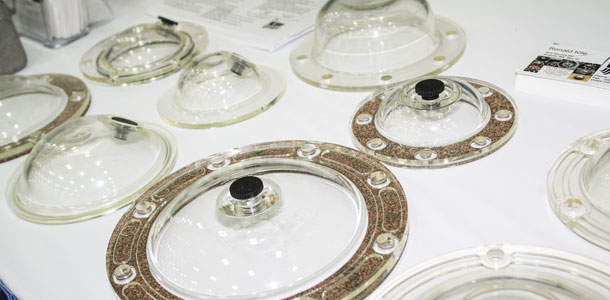
Kile Clear View Caps
Kile Machine & Mfg. Inc.
(509) 569-3814
Check oil levels at a glance in idlers, rollers, gaskets and plugs by replacing OEM caps with translucent molded-polymer caps. These UV-protected caps are resistant to extreme weather conditions and allow operators to view oil clarity easily.
Caps come in sizes to retrofit most makes and models. Simply use these to replace the factory-installed caps.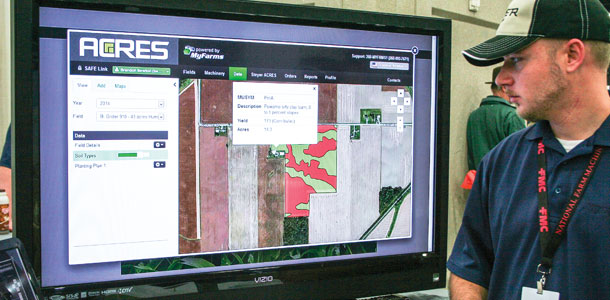
ACRES
Steyer Seeds
(800) 231-4274
In the world of precision ag, Steyer Seeds wants you to have confidence in your seed sales rep. So they’re not selling you anything additional – they’re just adding a new service.
They’re offering ACRES, a computerized crop-planning tool. With your input (crop history, management practices, etc., which they’ll help you set up), they’ll pull up your fields on a mapping system and calculate a dozen different inputs, then spit out a list of six recommended seed varieties for your exact needs – your exact field.
For anyone intimidated by technology use, they’ll make it simple for you, and you can weigh your sales rep’s recommendation against the computer calculations to make sure you’re receiving the most accurate information possible in seed selection. FG










